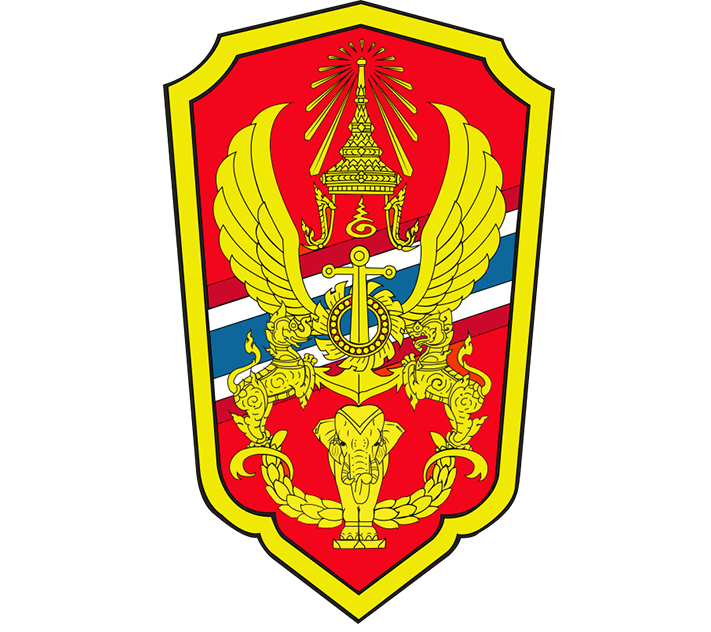เรื่อง: แนวทางการพัฒนานวัตกรรมสิ่งทอสีเขียวเพื่อสิ่งแวดล้อม, (วปอ.9122)
|
|
หมวดหมู่:
|
งานวิจัย
|
มิติ:
|
มิติเทคโนโลยี/วิทยาศาสตร์และเทคโนโลยี/Science and Technology
|
พื้นที่/ขอบเขต:
|
ภายในประเทศ/Domestic/Local
|
ผู้เขียน:
|
วิทยาลัยป้องกันราชอาณาจักร, นายสมหวัง บุญทองรุ่งทวี, (วปอ.9122)
|
หน่วยงานเจ้าของ:
|
วิทยาลัยป้องกันราชอาณาจักร
|
ปีที่พิมพ์:
|
2562
|
จำนวนหน้า:
|
|
การเปิดเผยข้อมูล:
|
สาธารณะ
|
|
บทคัดย่อ:
ก
บทคัดย่อ
เรื่อง แนวทางการพัฒนานวัตกรรมสิ่งทอสีเขียวเพื่อสิ่งแวดล้อม
ลักษณะวิชา วิทยาศาสตร์และเทคโนโลยี
ผู้วิจัย นายสมหวัง บุญทองรุ่งทวี หลักสูตร วปอ. รุ่นที่62
เอกสารวิจัยส่วนบุคคลฉบับนี้ มีวัตถุประสงค์ในการศึกษานวัตกรรมการผลิตสิ่งทอสีเขียว
เพื่อสิ่งแวดล้อมของประเทศผู้น าด้านสิ่งทอสีเขียว เพื่อศึกษาปัญหาและอุปสรรคในการพัฒนาสิ่งทอสีเขียว
และเพื่อพัฒนานวัตกรรมการผลิตสิ่งทอสีเขียวเพื่อสิ่งแวดล้อม โดยท าการศึกษานวัตกรรมการผลิต
สิ่งทอสีเขียวของประเทศไต้หวัน และการพัฒนานวัตกรรมการผลิตสิ่งทอสีเขียวท าที่บริษัท น ารุ่ง
เรย่อน จ ากัด โดยท าการผลิต 3 ผลิตภัณฑ์ คือ หน้ากากฆ่าเชื้อโควิด 19 ถุงเท้าฆ่าเชื้อแบคทีเรียและ
มุ้งยุงไม่เกาะส าหรับปัญหาและอุปสรรคท าการศึกษากับผู้บริหารระดับสูงของบริษัท น ารุ่ง เรย่อน จ ากัด
การด าเนินการวิจัยแบ่งเป็น 3 ขั้นตอนคือ 1. วิจัยเชิงเอกสาร 2. วิจัยเชิงทดลอง 3. การสัมภาษณ์เชิงลึก
จากการวิจัยเชิงเอกสารพบว่าประเทศไต้หวันใช้เทคโนโลยีในการผลิตที่ใส่สีเข้าไป
ในเส้นด้ายเลยท าให้ลดขึ้นตอนการฟอกย้อม ท าให้ประหยัดและเป็นมิตรต่อสิ่งแวดล้อมเป็นระบบ
อัตโนมัติสามารถควบคุมการผลิตได้ทั้งประมาณและคุณภาพ ใช้คนงานน้อย
จากการวิจัยเชิงทดลอง บริษัทน ารุ่ง เรย่อน จ ากัด เลือกใช้เทคโนโลยีในการผลิต
สมัยใหม่เช่นเดียวกับไต้หวัน และเพื่อให้ได้คุณสมบัติของเส้นด้ายที่พิเศษแตกต่างออกไปจากเส้นด้าย
ธรรมดา เช่น ฆ่าเชื้อโรคโควิดและค่าเชื้อแบคทีเรีย เติม Additive ที่เป็น Nano Zinc 2.5% เข้าไปใน
เส้นด้าย ผลการทดสอบจากหน่วยงานทดสอบพบว่าสามารถฆ่าเชื้อแบคทีเรียและโควิดได้ถึง 99.97%
ส าหรับมุ้งยุงไม่เกาะท างานวิจัยร่วมกับบริษัท Bayer เยอรมันนีโดยใช้Additive ของบริษัท Bayer
ผลการทดสอบได้ตามมาตรฐานที่ก าหนด
จากการสัมภาษณ์เชิงลึกพบปัญหาในการพัฒนานวัตกรรมสิ่งทอสีเขียว คือ การท าค่า %
ของ additive เพื่อให้ได้คุณสมบัติพิเศษตามต้องการ ต้องท าการทดลองหลายครั้งมากท าให้เสีย
ค่าใช้จ่ายสูง กับทั้งวัตถุดิบ เช่น Additive และ Masterbatch (แม่สี) ที่มีคุณภาพหาได้ยากและ
มีราคาแพง ข้อเสนอแนะบริษัทที่ผลิต Upstream ของไทยเช่น PTTGC, IRPC, HMC Polymers
ควรมีการผลิตวัตถุดิบเหล่านี้ขึ้นเองในประเทศ
abstract:
Abstract
Title Roadmap to Environmentally-friendly and Innovative Textiles
Field Science and Technology
Name Mr. Somwang Boonthongrungtawee Course NDC Class 62
This thesis describes the process of producing eco-friendly and innovative
textiles, as well as the obstacles that the industry have to face going forward. A study
in Taiwan on innovation in sustainable textiles is carried out at Numrung Rayon
Limited Company from three main products: Covid-19 protection mask, anti-bacterial
socks and anti-mosquito tents. The research is carried out in three steps: 1. Literature
Research; 2. Lab Experiment; 3. In-depth analysis and interview.
From literature research, Taiwan has developed an innovation that aids
the process of pigment input directly into the yarn, without requiring the dyeing
process that is harmful to the environment and is costly.
Following Taiwan’s innovation, a lab experiment conducted at Numrung
Rayon tested the injection of additives, like Nano Zinc, into the yarn directly instead
of applying a simple coating on the outside layer of the yarn, which after a few washes
will cause the property of the Nano Zinc to disappear. The lab results shows that
by adding Nano Zinc 2.5% into the yarn, there is a protection of 99.97% against
bacteria and Covid-19.
For the anti-mosquito tents, a collaboration is carried out between
Numrung Rayon and Bayer, one of the global leaders in pharmaceutical and health
care industry. A special addictive, produced by Bayer is injected into the yarn, giving
a very satisfying result.
Through deep analysis and interviews, it is revealed that the obstacles
that are preventing textile industries from going forward in a greater sustainable and
environmental-friendly way is the cost involved in the process. For example, to get
the proportion of addictive that needs to be injected into the yarn to meet the purpose
requires a lot of trial and error. The quality of addictive, masterbatch and the yarn
has to be of high standard which is rather rare domestically. To help increase and
develop innovation for Thailand's textile industry, Thai companies like PTTGC, IRPC,
HMC Polymers should aim to develop specialized addictive and raw materials
domestically.


